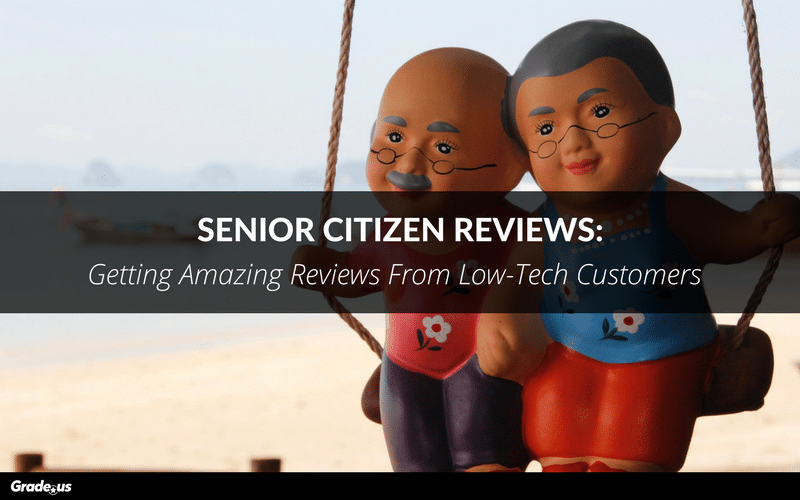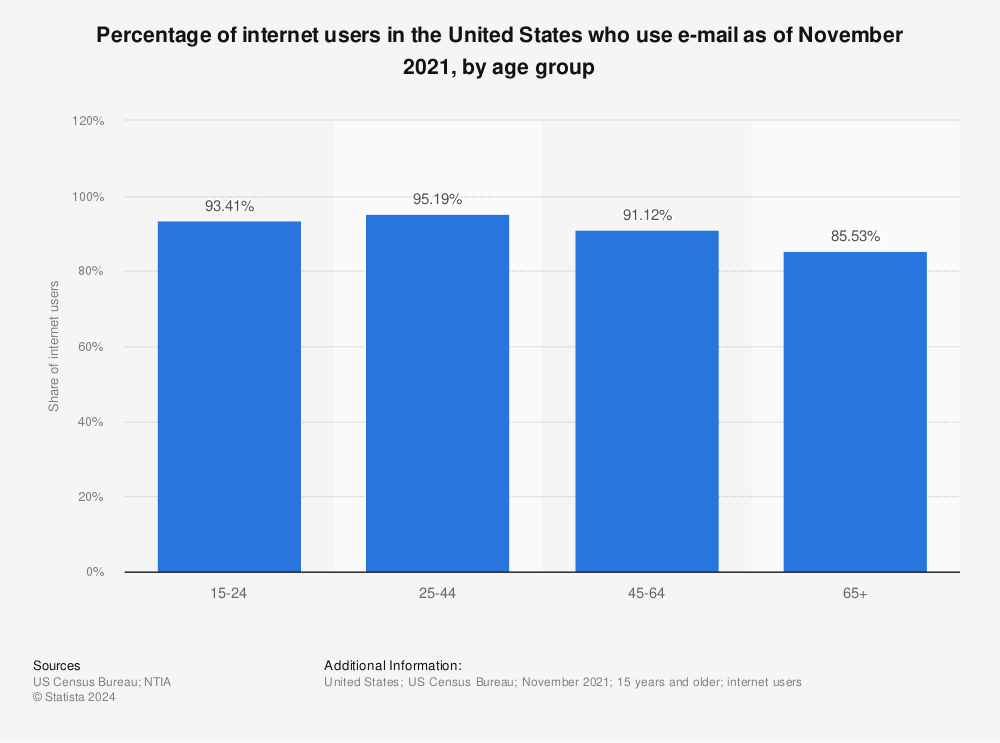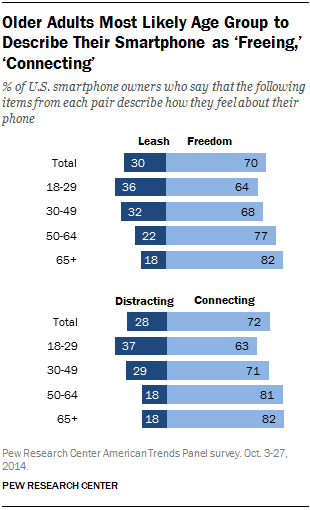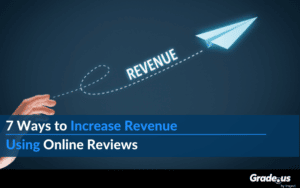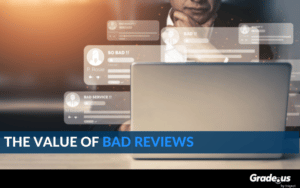Your customer is thrilled.
You've done an amazing job for them. They were in a rough spot but you saved the day. You're pretty sure they'd be willing to give you an amazing five-star review.
Just one problem.
Your customer is 76 years old.
They aren't all that familiar with the ins and outs of smartphones. They're on Facebook but they don't know their way around apps.
Still, their review would help you attract more like minded customers.
What do you do?
Simple, you pander to them
That sounds bad, doesn't it? Almost like I'm suggesting that you behave like a condescending jerk.
That's not what I'm suggesting.
I'm suggesting that you meet them where they are. That's important because it's so uncommon. As sellers, it's easy for us to push for what we want. It's easy for us to suggest that customers work around us.
We need to work around them.
Is it really necessary? Yes, believe it or not. When it comes to tech adoption, the Pew Research Center found seniors lag behind the general population.

"Many seniors remain largely unattached from online and mobile life—41% do not use the internet at all, 53% do not have broadband access at home, and 23% do not use cell phones."
It's as if seniors are living in another world.
If you're selling to seniors and they're unfamiliar with technology, they need you to meet them where they are. If you're looking to attract more reviews from seniors it would be a good idea to go low then high. You could for example...
1. Send them a handwritten thank you card, stating that you appreciate their business.
2. Follow up by asking for a review the right way, using low tech methods they're most comfortable with.
3. Save their review, eliminating extra work on their part.
4. Give them step-by-step instructions on how to post the review you've saved.
5. Thank them again for their help and support.
It's common sense but worth repeating anyway. Regardless of your audience, your conversation should be free from condescension and contempt. A review is a privilege, not a right.
Pandering to seniors citizens attracts amazing five-star reviews
Maybe you're focused on wealthy seniors. Does that mean your audience prefers a personalized review request via phone? Or would a handwritten note strike the right balance? What if you're focused on active seniors? Should you focus on supporting or sponsoring a specific cause?
It really depends on your audience, doesn't it?
This isn't about stalking your customers, or simply hanging out on the same platforms. That idea is unproductive on its own. It's also not about manipulating customers into giving you an insincere endorsement.
It's about relationship.
Here's the problem. While 7 out of 10 people own smartphones, seniors lag far behind. Smartphone ownership has doubled in the past five years but only 42 percent of seniors (65+) own a smartphone.
What makes things even more complicated is the fact that seniors seem to prefer old school, non-digital marketing strategies. This sounds like hot air until you realize 100 million people made purchases from catalogs in 2016 alone.
That's right, print catalogs.
Offline marketing strategies like direct mail are actually making a comeback. This presents a problem. Which marketing strategy should you choose?
This secret metric has your answer
Imagine you're in the healthcare industry. You want to sell your products to as many seniors as possible. How do you make that happen?
You focus on a simple metric. Usage.
Seniors use specific brands. Their life stage present unique problems and challenges. Issues they're focused on solving. See where I'm going with this? Your customers are already going about their lives. You're using the context of existing events to form a relationship.
Smart marketers rely on relevance. They position themselves around people, events and situations that complements their goals. How do you do that? You ask two simple questions.
1. Who's using this platform, strategy or tactic?
2. Is this platform, strategy or tactic relevant (or neutral) to my offer or what my audience wants?
These two questions come with an unexpected benefit. They protect marketers from shiny object syndrome. A new social network or platform appears on the scene and marketers flock to join. Business owners and entrepreneurs feel they have to be everywhere, all the time.
It's exhausting.
These two questions keep you focused on the areas that matter most. It forces you to ask an important question.
Where are seniors and how do I best serve them?
This is the best place to focus your attention. You're not chasing after people who aren't part of your target audience. You're not focused on customers who have lots of money. You're focusing on the customer who (a.) sees and understands the value you provide and (b.) is willing and able to pay for it.
The channels you choose and your approach (low tech or high tech) depends on usage. It starts by looking at how seniors use each channel.
How seniors respond to email
Pros
- Vast majority of seniors have a basic knowledge of email and how it works
- Consistent usage across providers
- It’s owned/earned media so you don’t have to spend more to access existing customers
Cons
- Subject lines compete for attention in their inbox
- Responsiveness tends to decline with time
- A conversion of any kind (review, sale, registration) depends on other tools, platforms and resources
Seniors understand the ins and outs of email. When requesting reviews, be brief and concise. Seniors often enjoy giving back. They're typically more willing to share their feedback about your business if it's positioned properly. Seeking wisdom and expressing gratitude are great angles to take. Just make sure your positioning is genuine and sincere.
How seniors respond to direct mail and signage
Research from the Journal of Direct Marketing found seniors are more likely to respond to direct mail. This is especially true if they're retired, in rural areas or they live alone. These seniors tend to be skeptical, price conscious and focused on convenience. Still, response rates are high due to the familiarity of direct mail.
Pros
- 79 percent act on direct mail immediately, compared to 45 percent via email
- Direct mail continues to grow, especially among seniors
- Problem focused, benefits driven offers perform best with seniors
Cons
- Conversion / cost per acquisition, per customer, is higher than digital channels
- Bias and skepticism is higher among seniors due to senior exploitation
- A recent DMA poll found 70 to 80 percent of consumers open most of their mail, including junk mail. Any request you make needs to immediately demonstrate value to avoid the trash bin.
Send seniors a heartfelt card. Thank them for their business, ask for support, seek their wisdom/advice. The theme here is "genuine and sincere." This won't be successful if it's something that's used to manipulate or deceive seniors.
Be direct, be concise and get to the point.
How seniors respond to text messages

Smartphone usage among seniors continues to rise but it's still not in line with the mainstream. The good news? Seniors with a college degree and/or income above $75,000 are far more likely to own a smartphone.
Most seniors who own a smartphone feel their phone equals freedom. It makes sense then that 94 percent of smartphone users (70+) are texting on a weekly basis.
Pros
- Seniors with smartphones are more likely to be highly educated earners with discretionary income
- Seniors with smartphones are very engaged/responsive
- These seniors understand the value of your product or service and respond appropriately
Cons
- Smartphone usage is growing more slowly with seniors
- While most seniors have cell phones, only a minority use/own smartphones. Texting is not yet mainstream for the elderly
- Seniors who are resistant to smartphones are overwhelmed by digital communication
Discuss this strategy with your audience first. This strategy makes sense if you're targeting highly educated seniors who are smartphone capable. This may not make sense if your audience has a low/fixed income and minimal education.
Surveys and testing are good ways to confirm whether this strategy is best for you.
Customize your review requests to ensure success with seniors
Seniors 65 and older still prefer non-digital communication. They're often overwhelmed by the pace and volume that comes with digital. They value convenience. They're less inclined to respond to requests that are way outside their comfort zone.
Running a fine dining restaurant downtown? Does your service business operate in an upscale suburban environment? The seniors you attract will be comfortable with mainstream digital communication strategies.
Testing is the best way to confirm your assumptions.
When you customize your review requests, you meet seniors where they are. If they're uncomfortable with digital communication, focus on non-digital. If they prefer low tech, give them what they need, then slowly adjust as they're able.
Review requests work best when they're tailor-made for your audience.
Pandering to senior citizens = meeting them where they are
It's easy for sellers to push for what they want, to ask seniors to communicate on their terms. Pandering to seniors isn't an insult when it's focused on their wants and needs.
You do amazing work for your customers.
There's a good chance they'd be willing to give you an amazing five-star review. But only if you ask the right away. The right way requires pandering - meeting them where they are. Give your savvy and traditional customers what they need. Do it on their terms and you'll find age really is just a number.
About the Author
Andrew McDermott
Andrew McDermott is the co-founder of HooktoWin. He shows entrepreneurs how to attract and win new customers.

